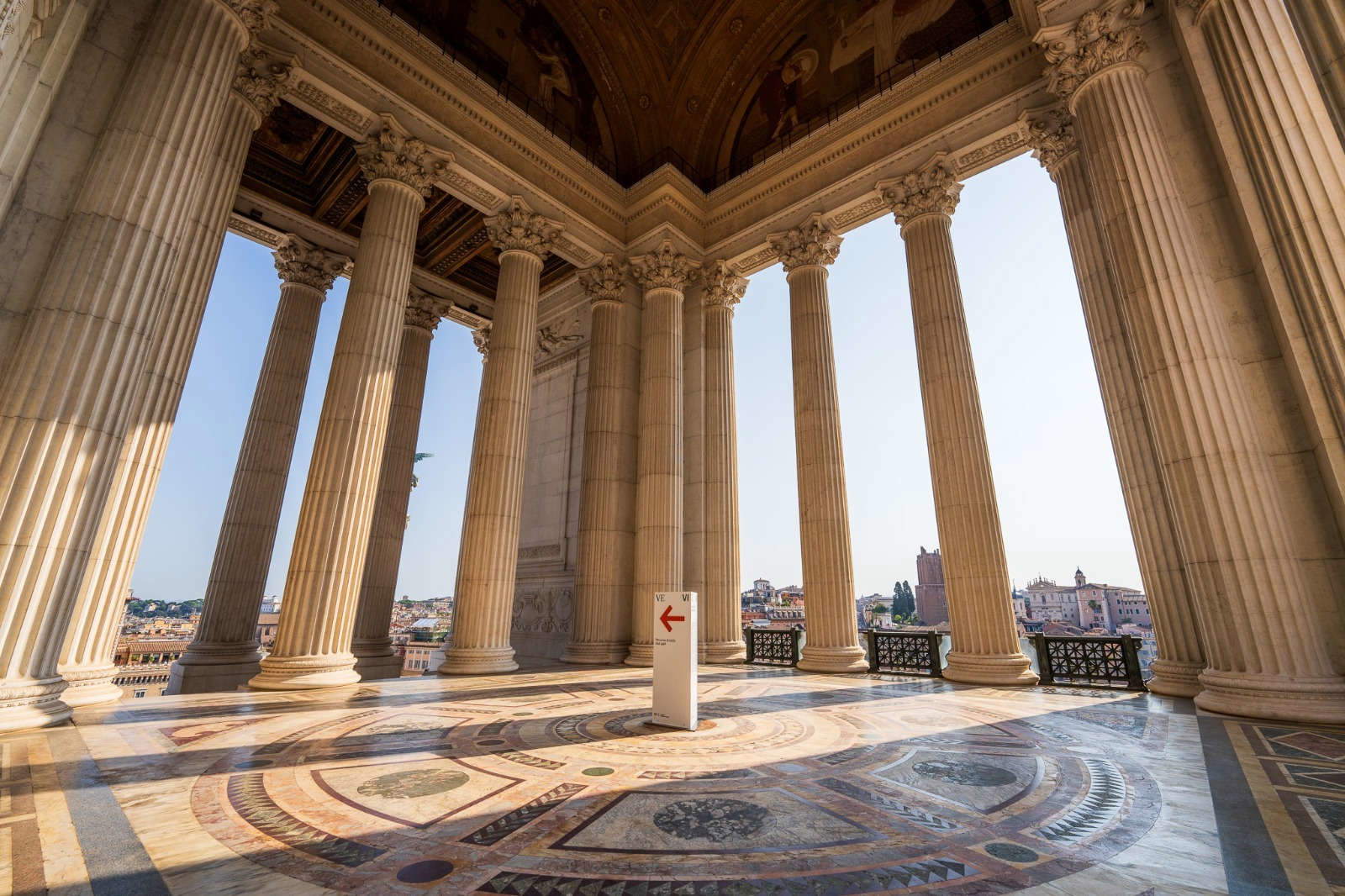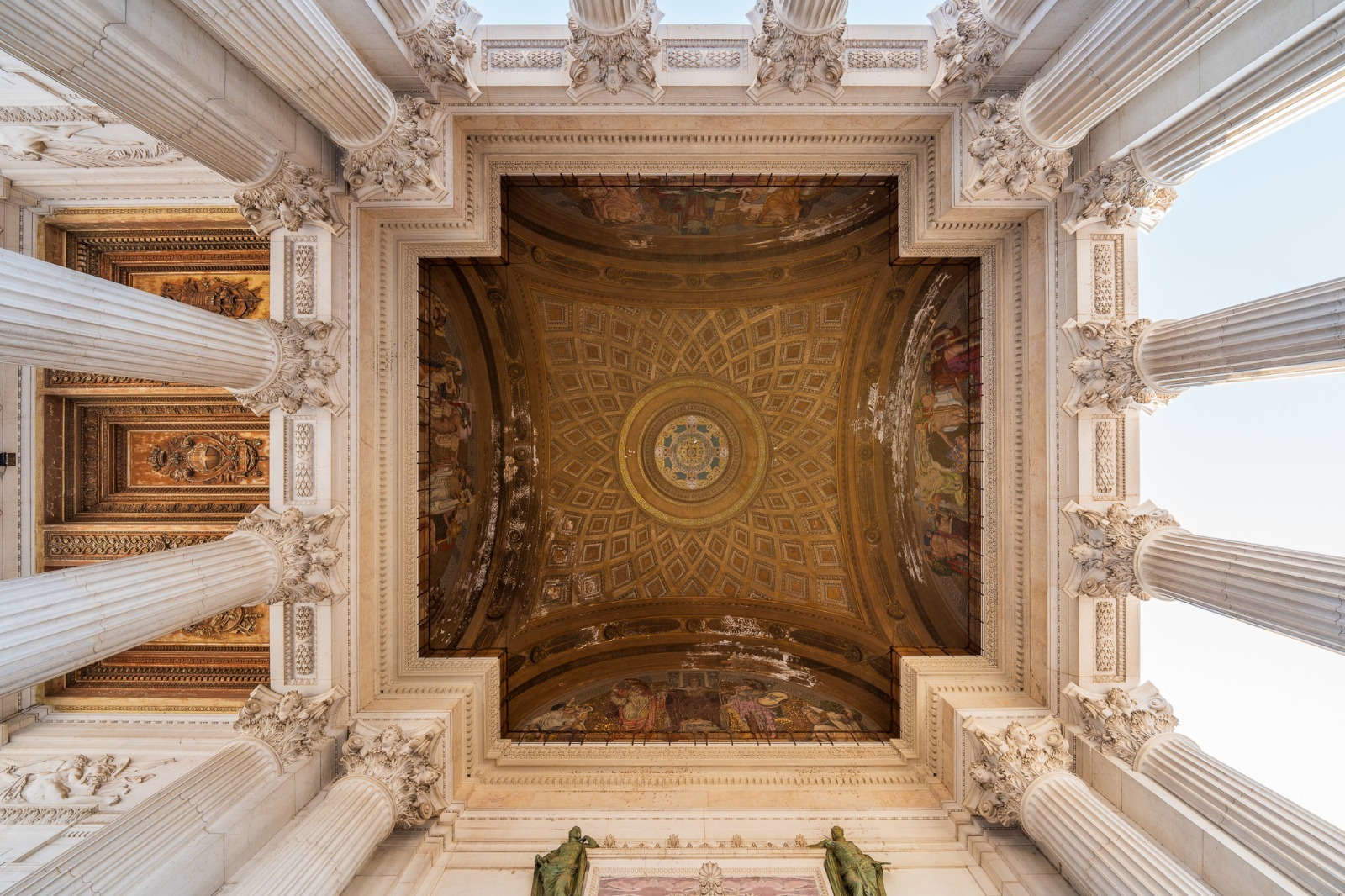The Sommoporticus and Propylaea of the Vittoriano in Rome reopen to the public
Starting tomorrow, Friday, July 26, 2024, the Sommoporticus and Propylaea of the Vittoriano in Rome will reopen to the public. Following an intervention to restore safety conditions and maintain the marbles, the Sommoporticus, more than seventy meters long and punctuated by sixteen, monumental columns, fifteen meters high, with the adjacent Propylaea, will return to be open to visitors after long years of closure. The initiative is aimed at enhancing the most important monument dedicated to the first king of Italy Vittorio Emanuele II (Turin, 1820 - Rome, 1878) to the Risorgimento period, and to the project of Giuseppe Sacconi, who chose the Renaissance of Donato Bramante, with the recovery of classicism and its values, as the artistic language of the new Italian state.
The spaces also restore the Vittoriano’s role in the political debate of the late 19th and early 20th centuries. The Propylaea are named after the two guiding values of Victor Emmanuel II and the entire Risorgimento process, namely the Unity of the Fatherland and the Freedom of Citizens. The sixteen columns of the Sommoportico recall the number of regions in Italy at the time, when many parts of the northeast had not yet become part of the national territory. Each column ends with a capital adorned with a female head with a turreted crown, an allegory of Italy. Again to the sixteen regions refer the Attic personifications. In addition to this, visitors can return to the decorations that characterize the Sommoportico: the marble ceiling and floor designed in 1907 by Gaetano Koch, the 17 lacunars in gilded stucco by Giuseppe Tonnini, and the paintings on the back wall, by Primo Panciroli, Silvio Galimberti and Carlo La Spina, with the dates of the Risorgimento: from 1848 in memory of the revolutionary uprisings to 1870 of Rome as the capital city. One can see the four columns placed on the access stairs, each surmounted by a winged Victory in gilded bronze, and the decorations of the Propylaea, that is, on the outside, the reliefs depicting Unity and Liberty, made between 1908 and 1910 by Enrico Butti and Emilio Gallori, respectively.
“After years of being closed, these sites return to the public, allowing citizens and tourists to rediscover and appreciate one of Italy’s most significant monuments and a symbol of national identity. Visiting this site allows Italian citizens to rediscover the reasons for being a national people and community. For some time, the MiC has been engaged in the work of caring for and enhancing new spaces,” says Culture Minister Gennaro Sangiuliano.
“The reopening of the Sommoportico and the Propylaea of the Vittoriano is an outcome of the valorization policies of Italian museums, conducted under the sign of securing and preserving, but at the same time of maximum openness to public enjoyment. The opening of these spaces, which at the same time allows people to appreciate and better understand the monument and enjoy splendid views of Rome from multiple angles, is one of the objectives of the National Museum System, coordinated by the Directorate General for Museums, with a view to an increasingly broader and more integrated cultural offer in the urban fabric,” says Director General for Museums Massimo Osanna.
“The opening of the Sommoporticus and Propylaea,” says Vittoriano Director Edith Gabrielli, “represents a further and important result of a broader, deeper and more articulated operation of critical recovery. Carefully studied and planned, the operation had a pivotal moment last year with the restoration of the central area of the Vittoriano, where the long and in some ways extraordinary frieze by Angelo Zanelli that adorns the Altar of the Fatherland is located. This new phase aims to enhance architect Sacconi’s design. At the time of winning the competition in 1884, Sacconi was just 30 years old and proposed to the very young Nation a very innovative language, rooted in classicism and even more so in the recovery of Donato Bramante’s mature Renaissance in the Cortile del Belvedere. Sacconi’s was an important, in some ways decisive action, which precisely in the Sommoportico and the Propilei is captured in its highest expression.”




 |
| The Sommoporticus and Propylaea of the Vittoriano in Rome reopen to the public |
Warning: the translation into English of the original Italian article was created using automatic tools. We undertake to review all articles, but we do not guarantee the total absence of inaccuracies in the translation due to the program. You can find the original by clicking on the ITA button. If you find any mistake,please contact us.





























